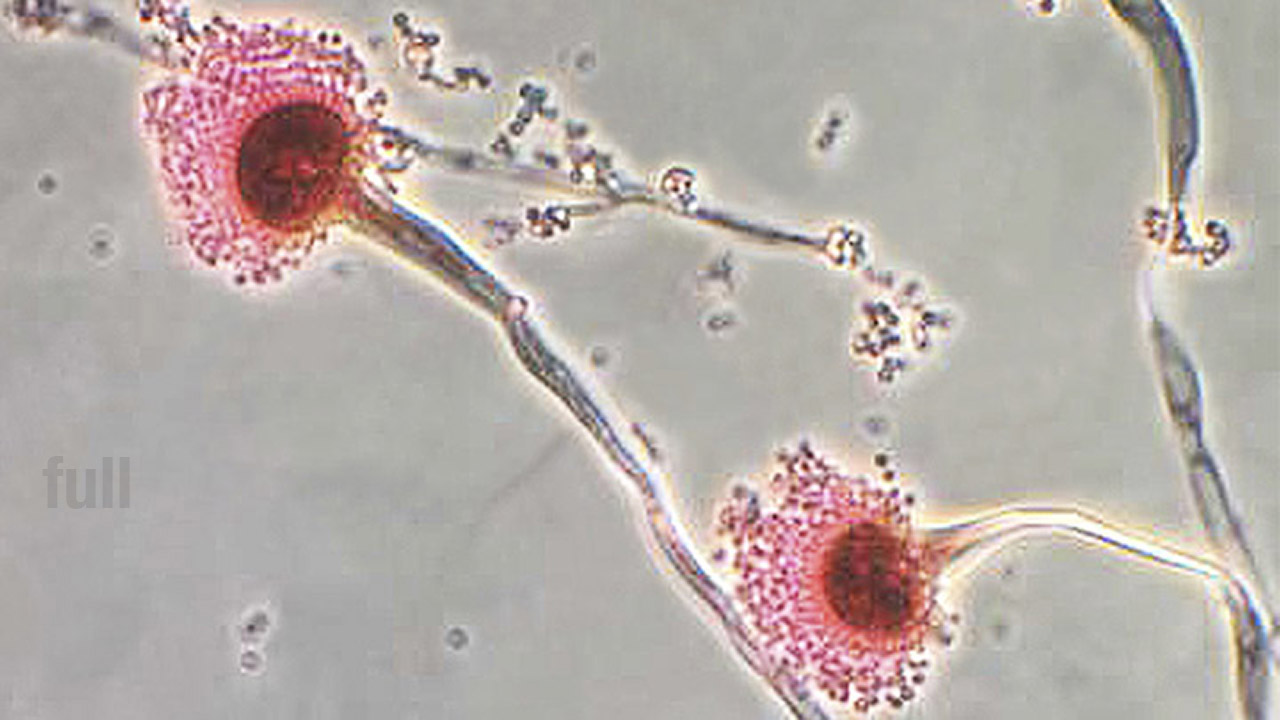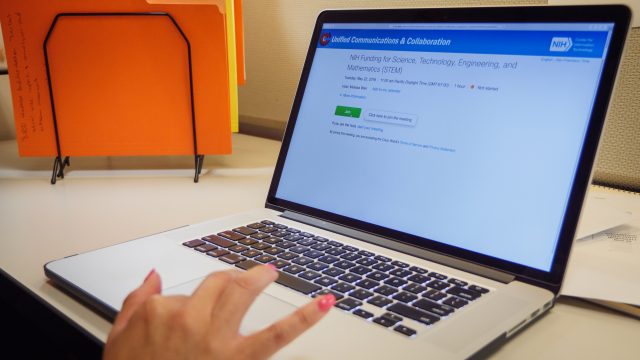MicroMatters

Project Website(s)
-
Project Description
A national partnership is addressing important national health and educational issues through the development and dissemination of in-depth interdisciplinary science and health teaching materials – known as “MicroMatters” – for middle school students focused on modern infectious diseases including HIV/AIDS. Project specific aims are as follows: Develop a new interdisciplinary model for middle school science and health instruction focused on content related to life science personal health career awareness and the assumption of responsibility for one’s own actions Based on the model create evaluate revise and publish three units of teaching materials (Infection and Disease; HIV/AIDS-A Modern Pandemic; Diseases in the Global Age) Evaluate the instructional units with diverse populations of teachers and students to assess individual teachers’ self-efficacy in implementing project materials and concepts in their classrooms; obtain specific measures of cognitive gain by students using objective assessment tools; and assess the overall effectiveness of each unit Promote adoption and use of the new materials by teachers schools and parents through dissemination and sustained teacher professional development at 10 partner sites Provide ongoing user support and opportunities for teachers to interact with one another other educators and scientists through face-to-face and asynchronous electronic pathways particularly through online teacher professional development (“virtual workshops”) Evaluate the effectiveness of the dissemination model in promoting ongoing use of the materials in classrooms by teachers and students
-
Abstract
In this Phase I/II application we describe a comprehensive plan for the development and dissemination of unique interdisciplinary educational materials on infectious diseases including HIV/AIDs for middle school audiences. The proposed MicroMatters project involves major scientific and educational partnerships at national and local levels during all phases. Project activities will reach more than 36000 students in grades 5-8 and their teachers. The project aims to increase understanding by middle school students their teachers and their families of infectious diseases biomedical research healthy lifestyle choices risk factors for disease and the everyday relevance of science; stimulate middle school students’ interest and awareness of science/health careers; and promote science/health teaching and learning through guided inquiry. The MicroMatters project will: Develop a new interdisciplinary model for middle school science and health instruction that includes life science personal health career awareness and the assumption of responsibility for one’s own actions Create evaluate revise and publish three units of teaching materials (Infection and Disease; HIV/AIDS – A Modem Pandemic; Diseases in the Global Age) Evaluate the effectiveness of the new units with diverse populations of teachers and students Promote adoption and use of the new materials by teachers schools and parents through dissemination and sustainment in which MicroMatters will capitalize on 10 years of experience at Baylor College of Medicine (BCM) in the creation and dissemination of interdisciplinary standards-aligned science educational materials for elementary and middle school students Successful Baylor-created materials include BrainLink and My Health My World. Both are now published and distributed nationally. Proposed project partners include: Baylor’s Center for AIDS Research; Centers for AIDS Research National Executive Committee; American Physiological Society Carolina Biological Supply Company; Texas Rural Systemic Initiative; Houston Independent School District; and partnerships led by Centers for AIDS Research at Case Western Reserve University Emory University New York University Northwestern University/University of Wisconsin/Chicago Public Schools Tufts/Brown Universities University of Alabama-Birmingham; University of California-San Diego; and University of Washington.
-
Dissemination Strategies
We are continuing to develop and disseminate resources on infectious diseases microbiology and the immune system on Baylor’s BioEd Online website (www.bioedonline.org). BioEd Online now serves approximately 3000 unique visitors each day and was one of five nominees in the education category of the prestigious Webby Awards. We also have begun teacher professional development on the Science of Microbes unit. During the past project year we presented workshops at the National Science Teachers Association and the Texas Conference for the Advancement of Science Teaching (see list of workshops under presentations). In Fall 2006 we are beginning dissemination of the unit in collaboration with Centers for AIDS Research in diverse locations and with the American Physiological Society.
-
Project Evaluation(s)
We will gather and examine data (numbers of workshops and participants numbers of teachers using materials in classrooms and numbers of students involved in project-related activities) from project partners participants in teacher professional development students and users of technology resources. We will use standard evaluation forms to assess participants’ satisfaction with the quality of professional development workshops. We will estimate levels of implementation of the instructional programs in classrooms through teacher self-report instruments and student pre/post content knowledge tests administered to subsets of classrooms. We also will document the types of follow-up used by each dissemination partner. For data analyses we will use ANOVA and repeated measures methods to monitor differences within and among groups represented by the dissemination partners. However it is important to note that these methods do not help identify characteristics that contribute to the effectiveness of regional partners in achieving gains in classroom teaching on the selected topics and gains in student learning. Therefore we also will use post hoc analyses such as multiple regression to identify characteristics that contribute to observed success by the dissemination partners. Evaluation of the virtual workshops will be designed to determine the extent to which tools and strategies developed are meeting user needs. Quantitative data will be gathered through results from knowledge-based user questionnaires incorporated into virtual workshop assessment questions as well as from follow-up queries with users regarding applications of the instructional concepts and resources with varying student groups. The Science of Microbes unit was field tested in 18 Houston-area middle schools with 12 additional classrooms serving as comparison groups. Students in the field test classrooms participated in most of the activities in the Science of Microbes unit (not all teachers used all nine activities). Students in the comparison groups were engaged in the normal ongoing science curriculum in their schools. As part of field test procedures students were given a test of content knowledge both before the teachers covered the “Microbes” unit and after. The test consisted of 20 multiple-choice items investigating knowledge on topics related to the unit such as “The global environment is dependent on microbes for” and “Which of the diseases below is not caused by a microbe?” Students in both the field test (n=344) and control (n=229) classrooms (18 and 12 classrooms respectively) were given the assessment instrument within the same time frame. Field test and control classrooms were statistically similar in student content knowledge before beginning the microbes unit (t = .325 p = 0.745 df = 563). At the end of the program field test groups saw an average gain of 18% on the post-test (t = 18.847 p < .001 df = 330 d = 1.036) while students’ scores in the control classrooms actually went down (8.96 and 8.61 pre-test and post-test means respectively). We did observe differences in the mean pre- and post-test scores of field test students at different grade levels. Students in fifth grade achieved the greatest gains from pre to post-test. Mean gains for each grade level were as follows: fifth grade 3.92 points on a 20-point scale; sixth grade 2.10 points; seventh grade 1.52 points. Field test teachers provided written critiques on standard forms that we have refined over time for our field test activities. We also collected feedback on the usability design and instructional value of each activity through two formal focus groups conducted by educational psychologist and evaluator J. Kyle Roberts Ph.D. The unit concurrently is undergoing evaluation by the American Physiological Society in the Washington D.C. area. Two members of the BCM CFAR also have reviewed the unit’s science content. We will revise the teacher’s guide based on evaluation outcomes.
-
Resources for Sharing
The Science of Microbes – This unit consists of 11 inquiry-based activities and a pre- and post-assessment that introduce basic concepts related to microbiology and disease. Students compare relative sizes of microorganisms learn about microbe diversity observe and culture different microbes and learn about diseases that have affected world history. The citation is Moreno N, Tharp B, Clayton S, Denk J, and Erdmann D. 2006. The Science of Microbes Guide for Teachers. Houston Texas: BioEd Center for Educational Outreach Baylor College of Medicine. 58 pp.
Project Photos
Project Audience
Middle school teachers and students.
Subjects Addressed
Infection and disease life science personal health career awareness and assumption of responsibility for one’s own actions.
Associated SEPA Project(s)
-
K-3 STEM Foundations: Life Science
R25OD021865-01 : 06/01/2016 - 05/31/2021
Associated SEPA Publication(s)
-
Linking Science Education and HIV Using Viral Biology, Epidemiology, and Science Practices
Health Education Journal, Sage Journals
Moreno N, Newell A, Zientek L, Nimon K, Vogt G.









